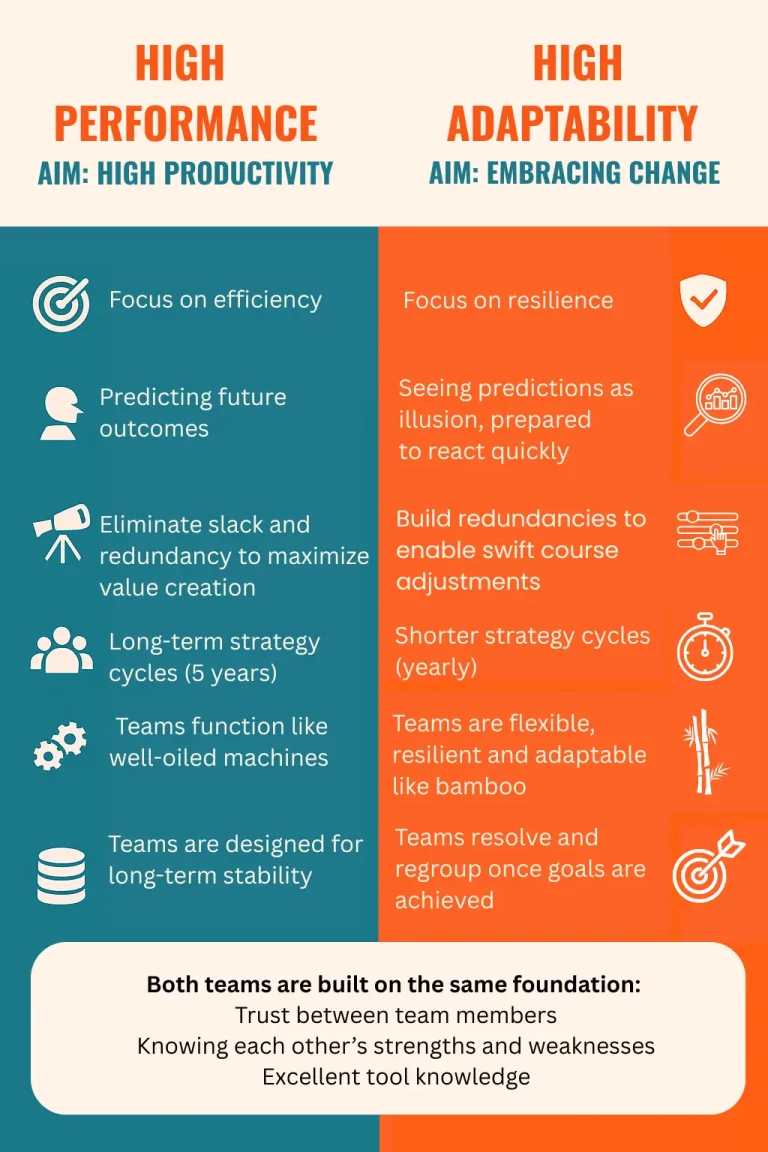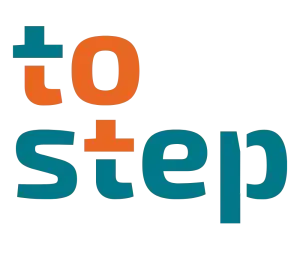Remember a decade ago, when it was the goal of every organization to create high-performance teams? It was all about productivity — cutting out slack, being as efficient as possible, and predicting what would happen next through data.
Today, this is no longer enough. We are faced with so many changes in the way we work, what our customers expect, and a high frequency with which we have to adapt our products and services. A couple of days ago, I came across one of my own blog posts from 2023. In it, I wrote that the only thing on earth capable of creating ideas was a human being. I would not defend that argument today, thinking about Artificial Intelligence.
With everything around us changing, it’s about time to evolve – again- how we define successful teamwork and look at the next maturity level: highly adaptable teams.
Highly adaptable teams
With the high number of external, unpredictable forces that act on our business — just think of U.S. executive orders and new technology — our aim is no longer to be as productive as possible. Instead, it’s to be prepared for change. To be able to pivot, instead of sticking to a strategy, once you see that the goal you were marching toward does no longer make sense. Instead of molding your team into the perfect, well-oiled machine, you are looking for a dynamic entity that bends like bamboo without breaking.
If you are adaptable like bamboo, you become resilient. You no longer fear change; you thrive in it. You realize that you cannot prevent it, so the best way is to see the opportunity in whatever comes your way, and to shift your goals onto the new path ahead, in order to not get left behind.
To be able to react quickly, you intentionally build something that you were preventing when focusing on high-performance: you create redundancies. Yes, your mindset needs to change from seeing redundancy as waste to recognizing it as necessary if you want to prepare for strong storms. You ensure that you are not dependent on any one person to do a specific job, but that at least two people can do it. This way, you are quicker to change course because you do not need to wait for anyone to return from vacation or sick leave.
With high-performance teams, the ambition was to build the team and create systems to reproduce results, implicitly assuming that the team players stay the same as long as possible.
Highly adaptable teams embrace the idea of working together in different constellations, and realize that they need to be able to quickly mold into a unit. What unites employees should be a common purpose or an ambitious goal, which everyone is ready to support fully.
If this is a given, and everyone burns for the mission, your highly adaptable teams will act like a flock of birds flying in a synchronized, swirling pattern– a murmuration.
Like a cloud, they move and adapt their course, avoiding crashes and reaching their goal in the most clever, yet indirect way. Some birds may change, but this does not hold the murmuration back. They adapt quickly to new birds joining the flock and are prepared for whatever they come across on their flight.
When I talk about being prepared for what comes your way, I do not mean predicting it- this is old school thinking. In a complex environment, you cannot control or foresee which element will be big and which will not. Time will tell. Just remember in 2021, when the technology hype was focused on creating a Metaverse- with the amount of funding and attention that went into it, it seemed like a fair bet that this would surely come. But it has not made the race, and so far there is no more talk about it.
Building the Foundations for Adaptability
The groundwork for highly adaptable teams is the same as for high-performing teams: you need a group of people that trusts each other and that understand each other’s strengths and weaknesses.
Because change is a constant, highly adaptable teams are characterized by a curiosity for new developments and a culture of learning, mostly in the form of tangible micro-learnings that can be directly applied to the job at hand.
In a study by Mathieu, Heffner, et al., published in the Journal of Applied Psychology, the researchers found that a characteristic of adaptable teams are shared mental models, which allow them to predict and explain what happens next and why. The team’s experience of working with each other helps each team mate to predict what their colleagues are going to do next and what they will need for it. They can take action based on these shared mental models and adapt their course.
Imagine a hospital emergency room. There are too many patients at once to be treated, and the team of doctors and nurses needs to triage patients and decide which one comes next. They are using a shared mental model for that, based on variables such as severity of the injury, knowledge of the equipment at hand and its availability, and the expertise of the doctors on shift to assign patients.
The nurse anticipates which tool the doctor is going to need next and can save sometimes critical seconds.
The tool knowledge of both doctors and nurses enables them to use the right equipment for the right purpose, without losing time and fiddling around with it.
This enables them to cooperate smoothly and efficiently, and make the best possible decisions for the patients.
Curious how this applies to you?
The ability to cooperate smoothly and change course based on new developments, is clearly invaluable. So, how can your organization cultivate this level of adaptability and seamless collaboration?
We are passionate about teamwork and bringing teams to the next level. Please reach out to discuss how we might support you in reaching your goals.

